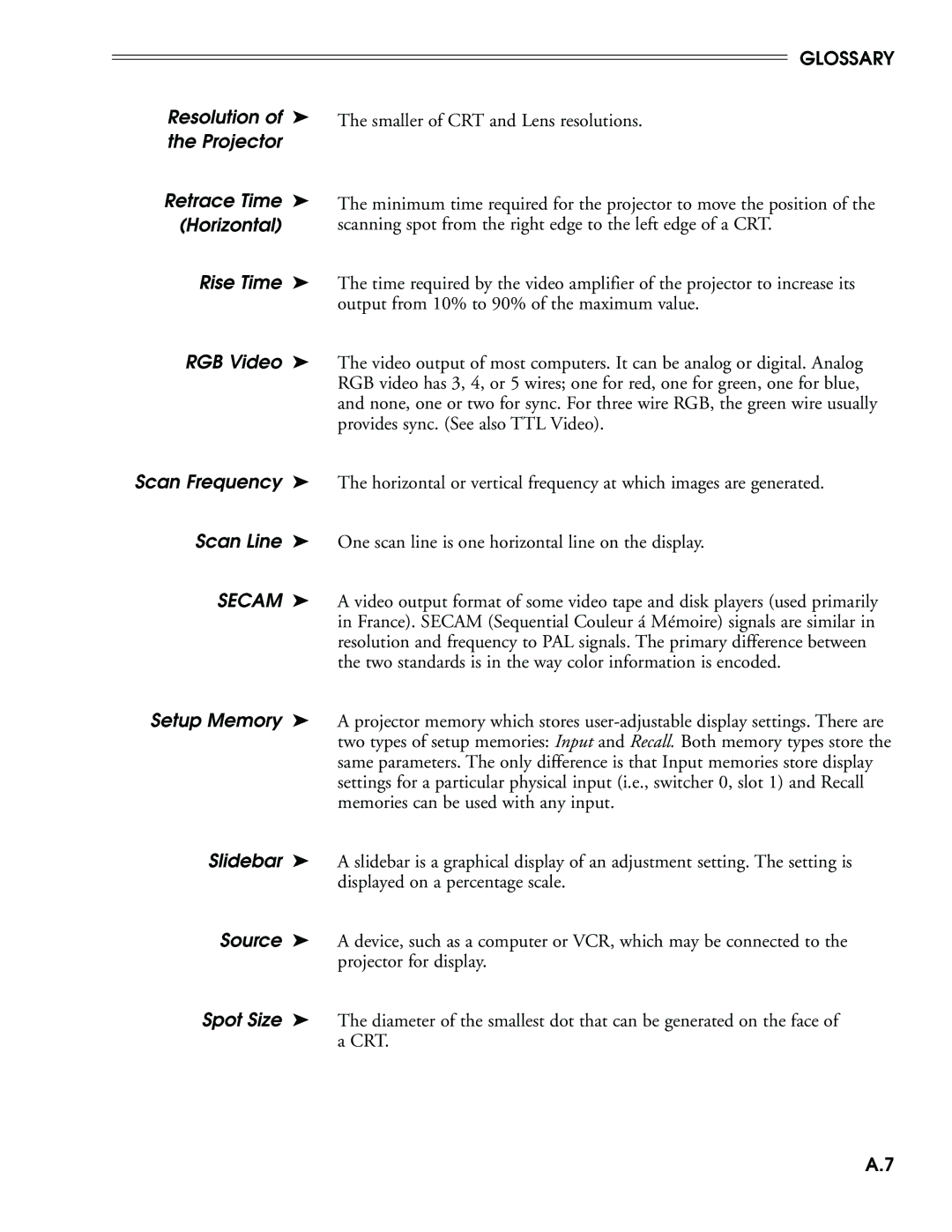GLOSSARY
Resolution of ➤ | The smaller of CRT and Lens resolutions. |
the Projector |
|
Retrace Time ➤ | The minimum time required for the projector to move the position of the |
(Horizontal) | scanning spot from the right edge to the left edge of a CRT. |
Rise Time ➤ | The time required by the video amplifier of the projector to increase its |
| output from 10% to 90% of the maximum value. |
RGB Video ➤ | The video output of most computers. It can be analog or digital. Analog |
| RGB video has 3, 4, or 5 wires; one for red, one for green, one for blue, |
| and none, one or two for sync. For three wire RGB, the green wire usually |
| provides sync. (See also TTL Video). |
Scan Frequency ➤ | The horizontal or vertical frequency at which images are generated. |
Scan Line ➤ | One scan line is one horizontal line on the display. |
SECAM ➤ | A video output format of some video tape and disk players (used primarily |
| in France). SECAM (Sequential Couleur á Mémoire) signals are similar in |
| resolution and frequency to PAL signals. The primary difference between |
| the two standards is in the way color information is encoded. |
Setup Memory ➤ | A projector memory which stores |
| two types of setup memories: Input and Recall. Both memory types store the |
| same parameters. The only difference is that Input memories store display |
| settings for a particular physical input (i.e., switcher 0, slot 1) and Recall |
| memories can be used with any input. |
Slidebar ➤ | A slidebar is a graphical display of an adjustment setting. The setting is |
| displayed on a percentage scale. |
Source ➤ | A device, such as a computer or VCR, which may be connected to the |
| projector for display. |
Spot Size ➤ | The diameter of the smallest dot that can be generated on the face of |
| a CRT. |
A.7
